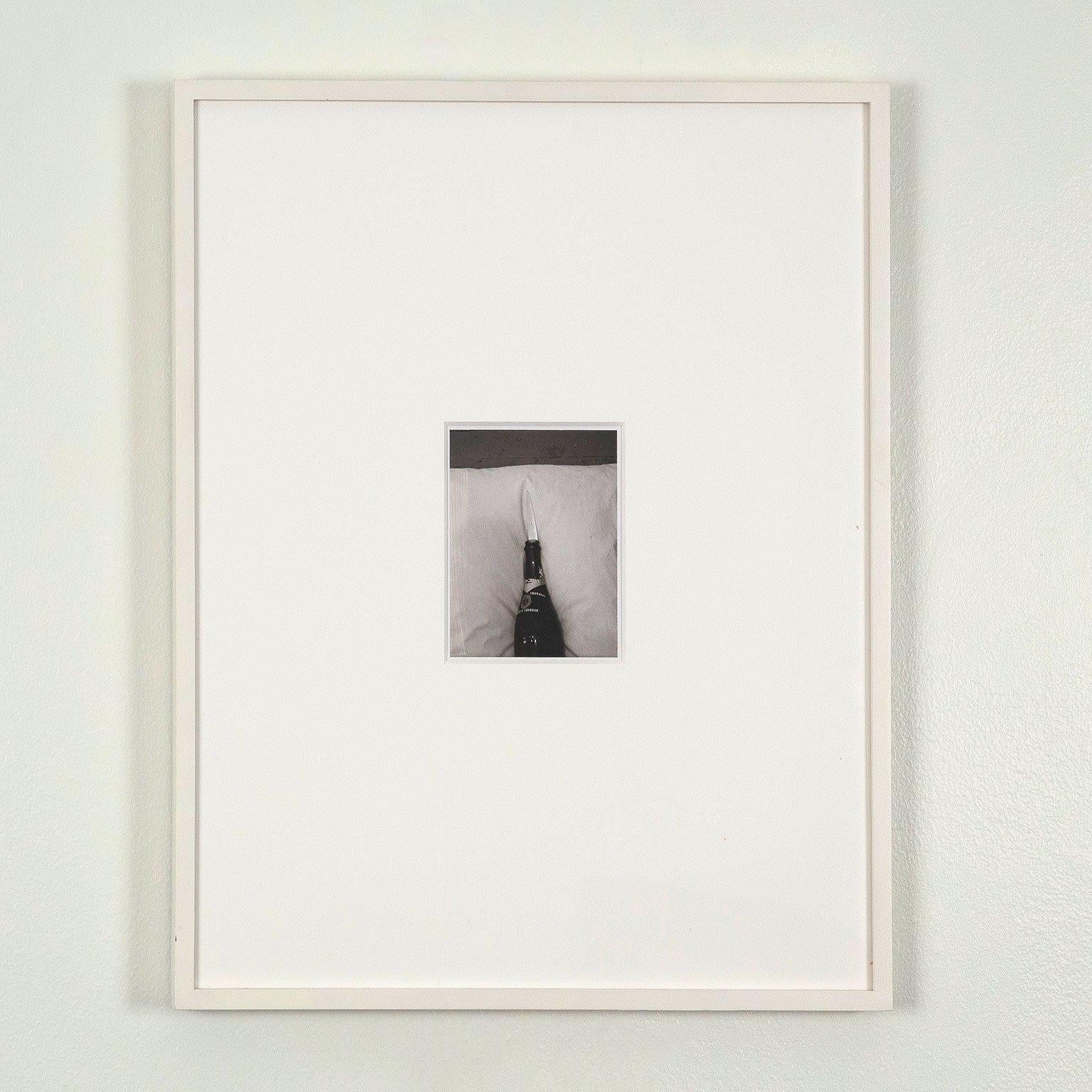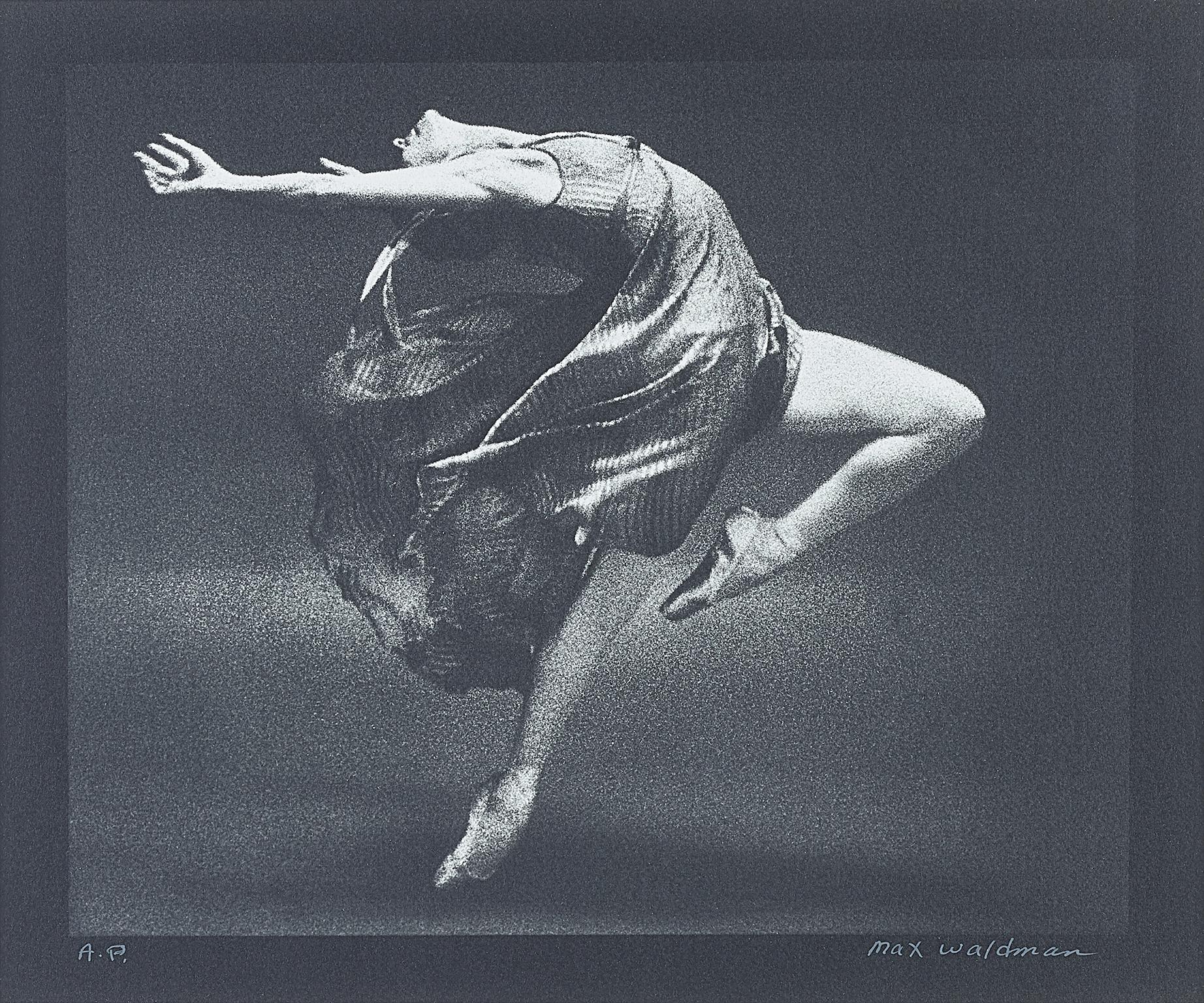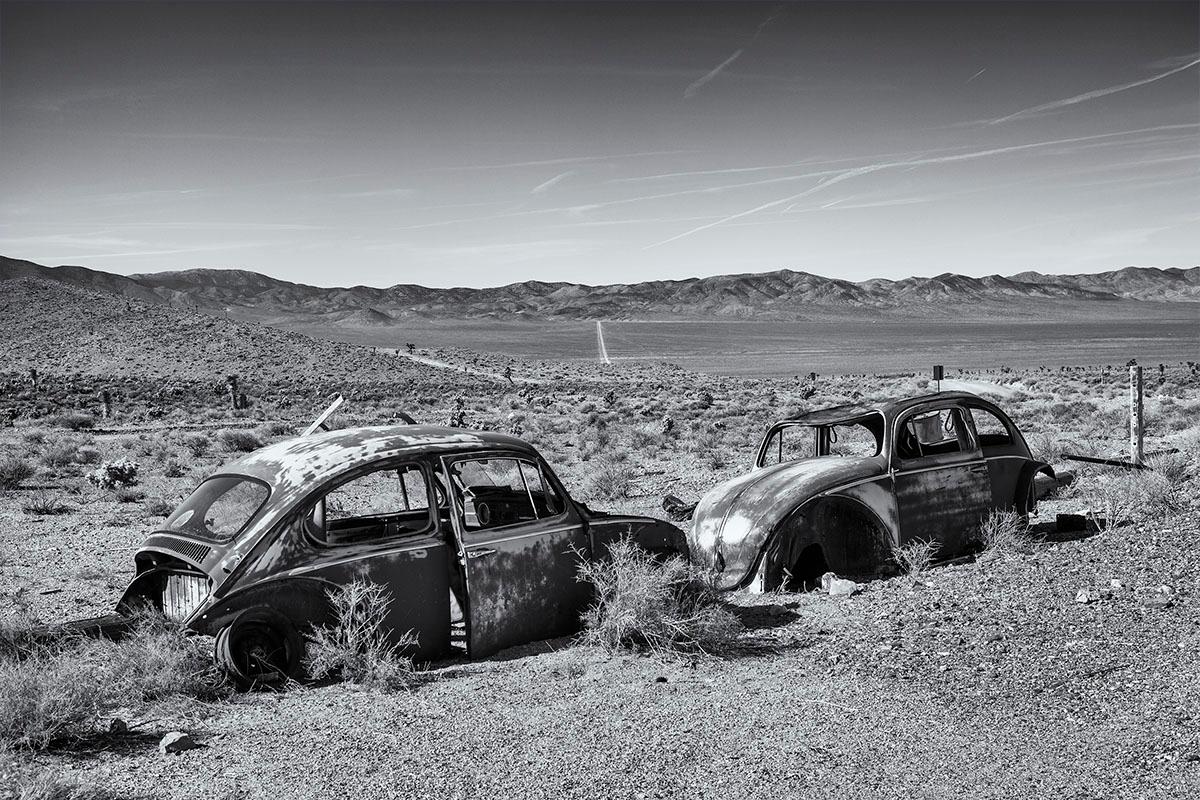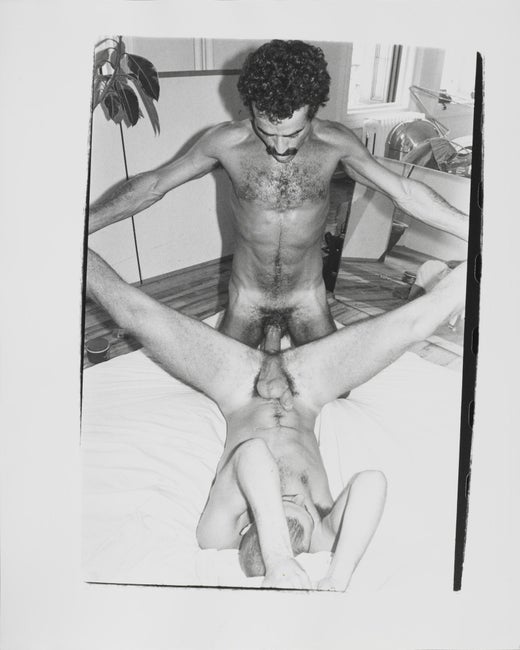Andy WarholOne Pistol 1981
1981
About the Item
- Creator:Andy Warhol (1928 - 1987, American)
- Creation Year:1981
- Dimensions:Height: 3.5 in (8.89 cm)Width: 4.25 in (10.8 cm)
- Medium:
- Movement & Style:
- Period:
- Condition:
- Gallery Location:Toronto, CA
- Reference Number:
Andy Warhol
The name of American artist Andy Warhol is all but synonymous with Pop art, the movement he helped shape in the 1960s. He was phenomenally prolific, and the archive of original photography, prints, drawings, paintings and other art that he left behind is beyond vast.
Andy Warhol is known for his clever appropriation of motifs and images from popular advertising and commercials, which he integrated into graphic, vibrant works that utilized mass-production technologies such as printmaking, photography and silkscreening. Later in his career, Warhol expanded his oeuvre to include other forms of media, founding Interview magazine and producing fashion shoots and films on-site at the Factory, his world-famous studio in New York.
Born and educated in in Pittsburgh, Warhol moved to New York City in 1949 and built a successful career as a commercial illustrator. Although he made whimsical drawings as a hobby during these years, his career as a fine artist began in the mid-1950s with ink-blot drawings and hand-drawn silkscreens. The 1955 lithograph You Can Lead a Shoe to Water illustrates how he incorporated in his artwork advertising styles and techniques, in this case shoe commercials.
As a child, Warhol was often sick and spent much of his time in bed, where he would make sketches and put together collections of movie-star photographs. He described this period as formative in terms of his skills and interests. Indeed, Warhol remained obsessed with celebrities throughout his career, often producing series devoted to a famous face or an object from the popular culture, such as Chairman Mao or Campbell’s tomato soup. The 1967 silkscreen Marilyn 25 embodies his love of bright color and famous subjects.
Warhol was a prominent cultural figure in New York during the 1960s, ’70s and ’80s. The Factory was a gathering place for the era’s celebrities, writers, drag queens and fellow artists, and collaboration was common. To this day, Warhol remains one of the most important artists of the 20th century and continues to exert influence on contemporary creators.
Find a collection of original Andy Warhol art on 1stDibs.
- ShippingRetrieving quote...Ships From: Toronto, Canada
- Return PolicyA return for this item may be initiated within 3 days of delivery.
- Moet BladeBy Robert MapplethorpeLocated in Toronto, OntarioRobert Mapplethorpe (1946 - 1989) helped elevate photography to be considered fine art in the 1970s thanks to his uncompromising images rich in contrast, from beautiful to brutal and elegant to uninhibited. Mapplethorpe’s career was as glittering as it was controversial. Feted and vilified in equal measure, he ran a successful commercial studio (for portraiture and fashion photography) while simultaneously producing some of the most contentious (and beautiful!) images of the 20th century. His depictions of gay sexuality (including S&M and bondage) provoked a fierce backlash both at the time of their creation and well into the 1990s and beyond. This unique polaroid dates from when Mapplethorpe began to focus on pure photography, abandoning the collages of the first chapter of his career. It is also a foreshadowing of his curiosity and pursuit of New York's S&M scene. This unique polaroid features an opened bottle of Moët-Chandon with a sharp blade emerging from the neck. Typical of Mapplethorpe, there is his signature balance of formalist qualities, foreboding references, with a touch of sexuality and violence. Mapplethorpe's style is instantly recognizable: simple forms set against neutral backgrounds, a razor-sharp focus, and opulent, tonal gradations ranging from inky, velvety black to luminous silver-white. Although this is a unique polaroid, its sibling is in the permanent collection of the Museum of Modern Art, New York. We believe that our example is superior to the two; the label is mostly concealed which intensifies the shapes and composition. Robert Mapplethorpe mounted over fifty solo exhibitions during his lifetime, including numerous museum shows in the USA, Europe, and Japan. Since his death, his work has continued to be exhibited and acquired by major international art institutions. Questions about this artwork? Contact us. "Untitled" (Moet Blade) USA, 1972 Unique polaroid. Annotated 'PD 708' in pencil in an unknown hand on the verso. Original stamp from Mertens Framers. 4.5”H 3.4”W (image) 15"H 8"W (framed) Very good condition. Detailed condition report by request Provenance: Xavier Hufkens...Category
1970s American Modern Black and White Photography
MaterialsPolaroid
- PistolBy Andy WarholLocated in Toronto, OntarioAndy Warhol began using the big-shot Polaroid camera in 1971 and continued using it religiously until his death in 1987. Despite the camera being discontinued in 1973, he continued t...Category
1980s American Modern Black and White Photography
MaterialsPolaroid
- Weegee "Distortion: Stripes"By WeegeeLocated in Toronto, OntarioInnovative, provocative, inimitable - these are just a few of the words to describe America's boldest photographer. Arthur Fellig, better known as Weegee (1899-1968) was a ground-breaking, successful (and notorious) photojournalist. His images shot on the streets of New York City are iconic and influential. In the 1930s he became the first New York City press photographer to obtain permission to install a police radio in his car. This allowed him to follow the city's first responders and to document their duties; responding to fire, crime, debauchery and of course, murder. By the early 1940s Weegee was experiencing fatigue with crime reportage. Ironically, this was also the point when he finally began experiencing professional validation and acclaim, to the point of being a minor celebrity. Notably in 1941 he was included in The MoMA's seminal "50 Photographs by 50 Photographers" (curated by Edward Steichen). The museum would also acquire five Weegee photographs...Category
1940s American Modern Black and White Photography
MaterialsSilver Gelatin
- Weegee "A Trip to Mars"By WeegeeLocated in Toronto, OntarioWhile many first associate Weegee (aka Arthur Fellig) with New York City crime scenes, perhaps a broader and more consistent theme is that of spectacle and/or urban entertainment. The origins of his nick-name and reputation date back to the 1930s when he became the first New York City press photographer to obtain permission to install a police radio in his car. Following the city's first responders and documenting their duties, Weegee had unprecedented access to New York’s fires, crimes, debaucheries and of course, murders. During the first decade of his career these unflinching urban tragedy or crime images paid Weegee's bills, but as he became more financially independent he was more inspired to pursue photographs on his own agenda. While his oeuvre is vast, Weegee was especially drawn to entertainment: nightlife, circuses, the theatre, showgirls, city thrills, the cinema etc. Some of Weegee's most dynamic and tender (and under-appreciated!) images are related to simply having fun (in a crowd). He was not confined to one neighbourhood or demographic. He captured action, faces and events from Coney Island to the Bowery and Greenwich Village, to Times Square and Harlem. In “A Trip To Mars,” Weegee depicts a multi-generational group crowding around a large telescope...Category
1940s American Modern Black and White Photography
MaterialsSilver Gelatin
- Weegee "Sailor and Girl Kissing"By WeegeeLocated in Toronto, OntarioWeegee (1899-1968) was equally fascinated and inspired by cinema and all of its tangents, from Hollywood movie stars to ordinary civilians going to the movies. While Weegee is typically associated with crime/disaster images, the broad theme of "entertainment" is a major component of his oeuvre. An interesting and provocative sub-genre of his cinema-related work are his images of couples (often heavy-petting) in movie theatres. Recent scholarship has established that many of Weegee's supposed clandestine images were actually staged or arranged with friends or co-operative strangers. Nevertheless, Weegee created these photographs in the dark with an array of clever techniques including infrared film, filtered flashbulb and triangular prism lens. Employed in shots such as this one, the prism lens would allow the artist to “see around corners,” useful at times when his subjects were in compromising locations. These images of kissing couples, Weegee wrote in 1959, were “his best seller, year in and year out.” "Sailor and GIrl at the Movies...Category
1940s American Modern Black and White Photography
MaterialsSilver Gelatin
- Waterski JumperBy WeegeeLocated in Toronto, OntarioArthur Felling, better known as Weegee (1899-1968) is America's premiere photojournalist and one of the last century's most influential photographers. He would become famous, beyond...Category
1950s American Modern Black and White Photography
MaterialsSilver Gelatin
- Rare Vintage Silver Gelatin and Polaroid Photograph Prints Ansel Adams PortraitBy Ansel AdamsLocated in Surfside, FLRare Vintage Silver Gelatin and Polaroid Photograph Prints in Polaroid Photo Album. These measure 10 x 8 4.25 x 3.25. it is a folder titled on it Custom Print by Polaroid the album i...Category
Mid-20th Century American Modern Black and White Photography
MaterialsPolaroid
- Caddy TailfinBy Robert FarberLocated in New York, NYCaddy Tailfin Archival pigment print on canvas 60 x 96 inches Edition of 10 AMERICANA "From rural Montana to the Manhattan skyline at dawn, from a New Mexico cowboy...Category
1980s American Modern Figurative Photography
MaterialsCanvas, Archival Pigment
- "Natalia Makarova " vintage photography. "Serge Lifar "Located in CANNES, FR"Natalia Makarova " is an gelatin print , silver bromide, numbered and signed photograph offered to " serge Lifar " by Max Waldman . Artist proof . Ser...Category
1970s American Modern Black and White Photography
MaterialsSilver Gelatin
- Two VolkswagonsBy Gerard GilibertiLocated in East Hampton, NYBlack & White Photo of two rusted Volkswagon's sitting in a desert Comes unframed Also available in 20"x30" About the Artist: My intent is to create a mythic dreamscape that explo...Category
1960s American Modern Black and White Photography
MaterialsArchival Pigment
- Steve Mass, the owner of the Mudd ClubBy William CouponLocated in New York, NYSteve Mass, the owner of the Mudd Club Archival pigment print image size: 36 x 36 inches Signed and numbered edition of 15 William Coupon is an...Category
1970s American Modern Black and White Photography
MaterialsArchival Pigment
- Patsy Pulitzer, Seaplane At Palm BeachBy Slim AaronsLocated in New York, NYPatsy Pulitzer, Seaplane At Palm Beach Chromogenic print, 1955 Estate stamped and hand numbered edition of 150 with certificate of authenticity...Category
1950s American Modern Black and White Photography
MaterialsSilver Gelatin
Recently Viewed
View AllRead More
Andy Warhol Piles Up the Gifts in This Fanciful Christmas Print
Created in the late 1950s, it’s one of a surprising number of holiday-themed works by the prolific Pop artist.
Jordan Schnitzer Started Collecting Warhol Prints Very Early — and Never Stopped
The Portland, Oregon, native has amassed a collection of art so outstanding that multiple museums bear his name and several exhibitions at any given time are showing pieces he owns. We caught up with Schnitzer to find out how he got started collecting Warhol and where his pieces can be found right now.






